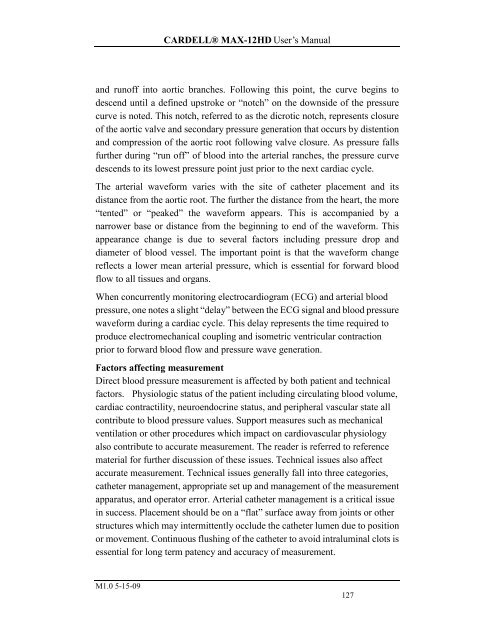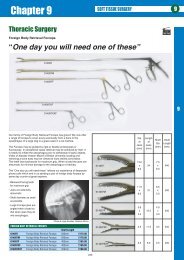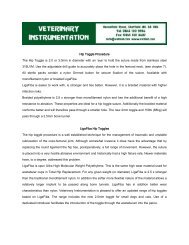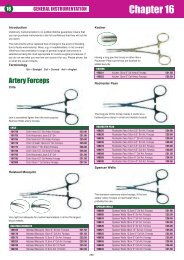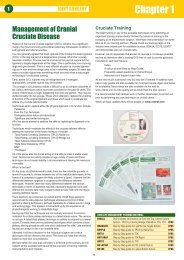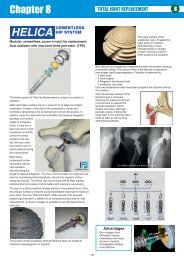Cardell MAX-12 HD - Veterinary Instrumentation
Cardell MAX-12 HD - Veterinary Instrumentation
Cardell MAX-12 HD - Veterinary Instrumentation
You also want an ePaper? Increase the reach of your titles
YUMPU automatically turns print PDFs into web optimized ePapers that Google loves.
CARDELL® <strong>MAX</strong>-<strong>12</strong><strong>HD</strong> User’s Manualand runoff into aortic branches. Following this point, the curve begins todescend until a defined upstroke or “notch” on the downside of the pressurecurve is noted. This notch, referred to as the dicrotic notch, represents closureof the aortic valve and secondary pressure generation that occurs by distentionand compression of the aortic root following valve closure. As pressure fallsfurther during “run off” of blood into the arterial ranches, the pressure curvedescends to its lowest pressure point just prior to the next cardiac cycle.The arterial waveform varies with the site of catheter placement and itsdistance from the aortic root. The further the distance from the heart, the more“tented” or “peaked” the waveform appears. This is accompanied by anarrower base or distance from the beginning to end of the waveform. Thisappearance change is due to several factors including pressure drop anddiameter of blood vessel. The important point is that the waveform changereflects a lower mean arterial pressure, which is essential for forward bloodflow to all tissues and organs.When concurrently monitoring electrocardiogram (ECG) and arterial bloodpressure, one notes a slight “delay” between the ECG signal and blood pressurewaveform during a cardiac cycle. This delay represents the time required toproduce electromechanical coupling and isometric ventricular contractionprior to forward blood flow and pressure wave generation.Factors affecting measurementDirect blood pressure measurement is affected by both patient and technicalfactors. Physiologic status of the patient including circulating blood volume,cardiac contractility, neuroendocrine status, and peripheral vascular state allcontribute to blood pressure values. Support measures such as mechanicalventilation or other procedures which impact on cardiovascular physiologyalso contribute to accurate measurement. The reader is referred to referencematerial for further discussion of these issues. Technical issues also affectaccurate measurement. Technical issues generally fall into three categories,catheter management, appropriate set up and management of the measurementapparatus, and operator error. Arterial catheter management is a critical issuein success. Placement should be on a “flat” surface away from joints or otherstructures which may intermittently occlude the catheter lumen due to positionor movement. Continuous flushing of the catheter to avoid intraluminal clots isessential for long term patency and accuracy of measurement.M1.0 5-15-09<strong>12</strong>7


